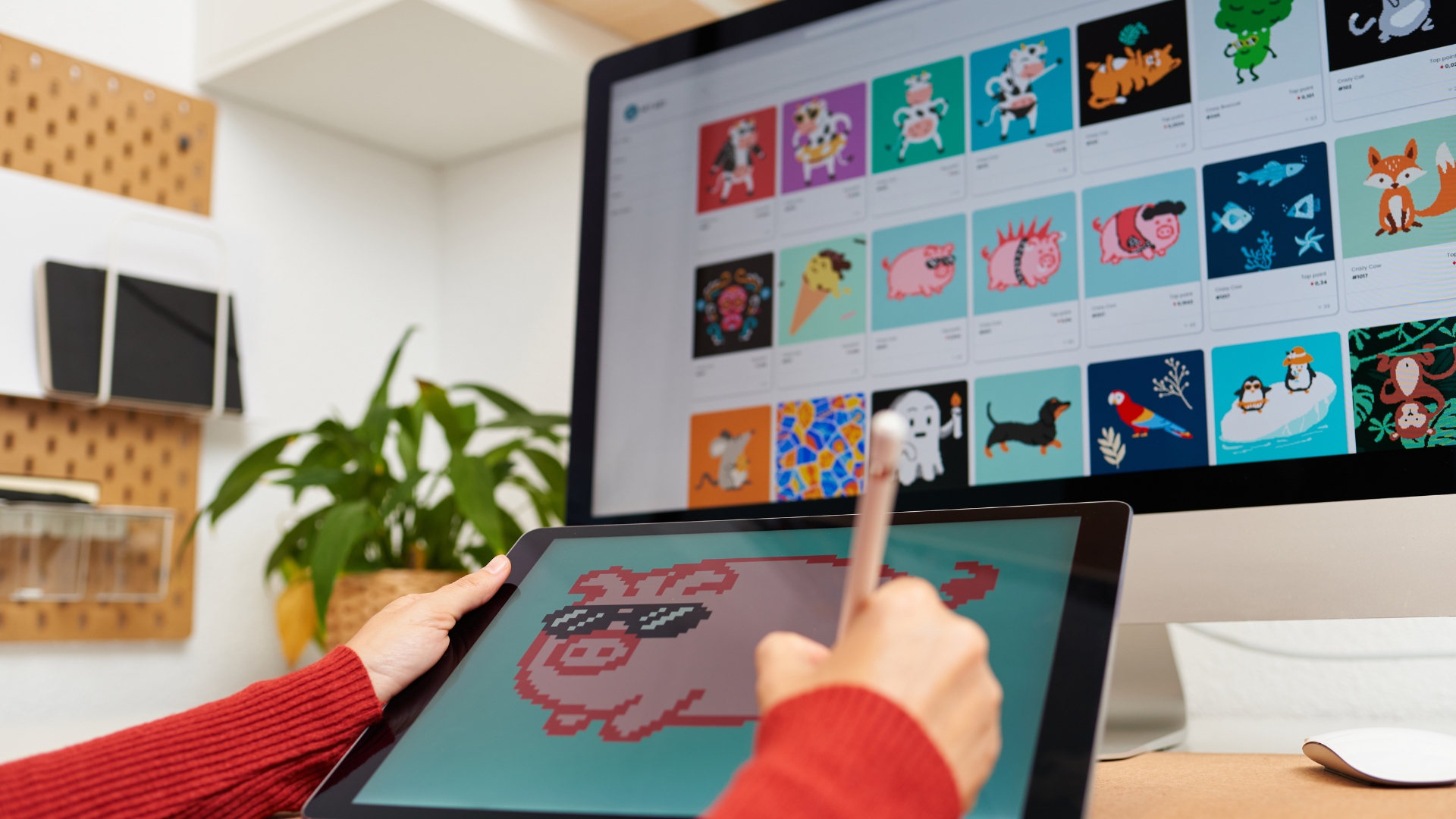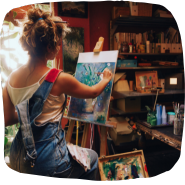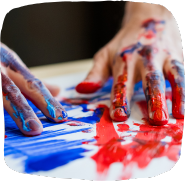Find Your Perfect School
Being in an art and design school provides students with opportunities to shape arts and culture, drive industry innovations, and even make society-wide contributions. Over the last few years, we’ve also seen changes in the art and design industry, from its technological advancements to its impact on society.
Check this out: Easiest Online Art and Design Careers
In this article, we navigate 10 things every art and design student should know as they prepare for success in their specialization, whether it’s in graphic design or industrial design.
After all, every ambitious art and design student must plan for success as early as possible! In the competitive art and industry, a bachelor’s degree isn’t enough – you have to be more creative, more prolific, and even more business-minded than you dreamed you could be!
Keep in mind, too, that you’re in competition with yourself – and that’s the best way to keep moving forward in your art and design career.
Invest in Your Art and Design Portfolio
Think of your art and design portfolio as your visual résumé – the best way of telling your story, showcasing your talent and skills, and demonstrating your unique artistic style. Indeed, your success in design school partly rests on your ability to gather the best art and design projects in your portfolio! Such success will carry over into your professional career, whether you’re a graphic designer, an industrial designer, or an illustrator.
As an art and design student, your professors will require a wide range of projects that will demonstrate your progress and growth as an artist and designer. Your portfolio doesn’t have to show your progress every step of the way – instead, it should show your best work! Your portfolio will then undergo numerous changes in your journey from art and design school to your professional career.
What steps can you adopt in creating your art and design portfolio in every phase of your journey?
- Define your goals first and gather the best work that meets them. Your goals will be different when you’re applying for a master’s degree program, for a job, and for an art and design exhibition.
- Consider the portfolio trends and find ideas for your own portfolio. You can either meet expectations or set the trends when you’re aware of them.
- Tell your story, ideas, and aesthetics through your art and design works.
- Ask for constructive criticisms and consider them when choosing what should be included in your portfolio.
- Print your portfolio using the best resolution and print quality for obvious reasons.
It’s vital that you remain true to yourself and your vision, passion, and life! While it’s challenging to be a truly unique individual in a world that demands conformity, it’s possible and it brings huge rewards.
Create Your Personal Brand
Even among art students, creating a strong brand identity is a must because of its impact on their success in design school and in their professional careers. Indeed, it’s never too early to start creating your personal brand! Your unique combination of artistic talent and skills, as shown in your art portfolio and/or design projects, is part of it.
While the projects in art and design school vary in their requirements, your personal brand can still shine through. It may be in your choice of fonts, colors, and shapes or in your communication of ideas.
Whatever way you express your personal brand, you’re letting your target audience know who and what you are, your values and worth, and your edge. You should never be ashamed about promoting yourself and your brand either because it’s what successful artists and designers do!
- Find brands that you can learn from and take notes
- Determine your uniqueness – what sets you apart and what image you want to create
- Define your brand including its values (e.g., elegance or grittiness)
- Understand your target audience – needs and wants, values and ambitions, even age and other demographic aspects
- Identify and use the right channels and content – for example, traditional and digital media, visual arts and text, and promotional materials
Remain consistent with your personal brand across all channels and content! Your laser-like focus on developing your personal brand now will pay off in the future.
Be Open to Criticism and Feedback
Every art teacher worth their salt will provide criticisms and feedback on the projects made by their art and design students – it’s part of the job of teaching design concepts in contemporary times. You, a design student, must be open to both the positive praises and constructive criticisms that every art and design teacher gives.
You will agree that there’s always room for improvement in every project you make. Your willingness to embrace failure and adopt a growth mindset will be instrumental in your success! Such is the importance of constructive criticism in your journey and you must actively seek it. Your artistic journey will be better for it because you can gain fresh perspectives, refine your technical and artistic skills, and improve your creative process.
But it also matters to strike a balance between staying true to your art and getting inspiration from peers, teachers, and professionals. Many successful artists were fiercely criticized for their art and design aesthetics but stuck to their guns – Marcel Duchamp, Barnett Newman, and Andy Warhol are notable examples. You don’t have to take the criticism as a personal attack either since, in most cases, it isn’t – it’s the other person’s opinion and, thus, should be respected, if not taken with a grain of salt.
You should also develop the ability to evaluate every project with an objective eye! Self-awareness contributes to self-directed growth, a personal skill crucial in your growth as a design student and as a professional artist and designer in the future.
Develop Diversity in Your Skills
Art and design students take art classes because these are critical in the mastery of traditional and digital art techniques. Even with technological advancements, the importance of a solid foundation in drawing, painting and sculpture cannot be overemphasized. Indeed, you’re in art classes because you want to gain technical skills in composition, perspective and color theory, among other art and design concepts!
With a solid foundation, you’re in a better position to experiment with different mediums and styles! Your ability to take on a different approach with a familiar medium can set you apart, too, whether it’s in graphic design or industrial design. You will find, too, that getting out of your comfort zone can be your way out of the doldrums that every artist and designer encounters.
Being able to build diverse skills as an art and design student also means more opportunities for collaboration with your peers and professors. You may even get prospective clients interested in your work, partly because you have demonstrated your ability to work with a team.
Keep in mind that artists and designers usually work with professionals from other fields – industrial designers, for example, work with engineers – so communication and collaboration skills are a must.
Aside from technical skills, these transferable skills are crucial to your success as a student and professional:
- Communicating with peers, professors, and clients
- Presenting and displaying your portfolio and projects to a group
- Solving issues related to projects
- Working with others toward a common objective
- Understanding the art and design industry including its history, current issues, and trends
Even after you’ve earned your bachelor’s degree, stay on top of your game! In an ever-evolving industry, it’s an essential trait for success.
Are you thinking about job options? Check this out: Highest Paying Jobs in Art and Design
Build Your Creative Network
In the Internet Age when art and design has an international market, art and design students must be aware of the rich opportunities that it can create for their future careers! Among the crucial steps is building your creative network as early as your first day in university and expanding it over the years.
Your peers are your first source of networking because you’re likely to share many common aspirations, backgrounds, and ideas. Put in enough time and energy required to connect with them, too, from sharing tips to getting involved in their projects, perhaps even working together on an academic paper as an assignment.
Your professors are also a great source for building your creative network. You can even ask a few of them to be your mentors who will teach the ins and outs of the industry, provide feedback, and push your artistic talents beyond what you thought possible.
Beyond the classroom, you must reach out and be part of the larger art and design community. You can start with the local community because that’s where you will find peers, mentors and clients. The best places for networking beyond the classroom include art and craft fairs, exhibitions and industry conferences.
You must also explore the opportunities that being online brings, such as the opportunity to make your unique artistic voice heard beyond your locale. You may create your own website, too, so that interested people will have a way of seeing your work and connecting with you.
Networking with the art and design community at large brings many benefits, too. You can showcase your work, engage in conversations with diverse individuals, and expand your own perspectives about art and design, even life in general. It is this sense of belonging in a community that is a reward unto itself, too!
Be Adaptable to the Changing Trends
Being informed about the trends in the art and design industry allows students valuable insights into the ever-evolving techniques and technologies, aesthetics, and frameworks that artists and designers follow. The knowledge gained enables students to create art and design projects that are in tune with the times and, in the case of students who want to sell their works, that will attract clients.
Of course, if you can set the trends in the art and design industry, then the better for your career advancement even when you’re still in university! While we don’t recommend dropping out of art and design school, there are plenty of successful artists and designers who did and set the trends in their niches – Coco Chanel, Pablo Picasso, and Jasper Johns, among others.
Start by reading art and design industry publications since these are excellent sources of information, from the art and design history to the up-and-coming trends (e.g., holographic design). Check out The Modernist, Harvard Design Magazine, and MacGuffin for starters. You will find plenty of inspiration from the photos and articles for your own projects.
Explore and experiment on your own, too, because these are the best ways to determine whether the current art and design trends are aligned with your own aesthetics. There’s no need to adopt each and every trend that comes along! Otherwise, you will lose your unique voice, not to mention that your work will be an incoherent hodgepodge of ideas – and it’s unattractive, to say the least.
Embrace Technology and Its Opportunities
Contemporary artists and designers use technology in creating their works because of the benefits that come with it. The Macbook Pro, for example, is a popular choice for students in graphic design, industrial design and illustration due to its numerous useful features (e.g., high-resolution display and powerful processor). Indeed, the integration of traditional art and design techniques with the newest technology results in more, better and newer possibilities for creative expression!
In art and design school, said integration is already par for the course but it’s also crucial for students to learn the technologies and tools on their own. Like the industry itself, the technology that artists and designers use has fast obsolescence and, thus, keeping up with new updates and features is essential. This holds true for digital artists and designers whose careers are strongly influenced by their knowledge and skills of technology.
The emerging technologies that art and design students must be aware of – and learn in and out of their classes – include artificial intelligence (AI), virtual reality (VR), and augmented reality (AR). The Internet of Things, robotics, art analytics, and cloud computing are also coming to the fore.
These technologies aren’t just influencing the way that art and design works are created but also in how these are stored, displayed and distributed!
AI-generated artworks, for example, are being created and sold in notable auction houses like Christie’s while robot-painted pieces create textured artworks. The likes of Mudstack and Artwork Flow make asset management simpler while ARTBANX and Clarus use data analytics to determine the market values of art and design collections.
Art and design – and by natural extension, artists and designers – have the power to shape, influence, and reflect the social, cultural, and political narratives of the day! Indeed, art and design are so closely interwoven with daily life that we take their influence for granted.
“With great power comes great responsibility,” Spider-Man says. Students of art and design must therefore be mindful of their works’ sociocultural context and impact. By exploring sociocultural issues and expressing them through their works, students have the power and opportunity to shape discussions about these issues. While it’s cliche, a picture speaks a thousand words and it’s where your talent and skills in the visual arts and communication can be of use.
Art and design have been catalysts for social transformation at many points in our history, too. In contemporary times, the likes of Olafur Eliasson (a conceptual artist), Mary Mattingly (an interdisciplinary artist), and Agnes Denes (an environmental artist) tackle the pressing issue of climate change through their art and performances.
There are also artworks that shone the spotlight on labor rights (e.g., Ralph Chaplin’s The Hand That Will Rule the World) and the fight for freedom (e.g., Bahia Shehab’s The Blue Bra), among other social and cultural advocacies.
We’re not saying that you should also start a social revolution! But if your art and design works can give voice to the voiceless, foster compassion for the less fortunate, and contribute to a better society, then isn’t it a better use of your time and talents?
Strike a Balance Between Your Passion and Paying the Bills
The starving artist stereotype may be outdated but it’s a cliché that still has a hold on the imagination – and reality, for that matter, among struggling artists and designers. Entry-level salaries for graphic designers with a bachelor’s degree, for example, range between $52,200 and $66,900 per year, While these aren’t starvation levels, these salaries may or may be insufficient depending on your student loan debt, geographic location (i.e., cost of living), and lifestyle.
As early as your student days, you must then learn effective ways of striking a good balance between your artistic passion and your ability to pay the bills! You should consider your career prospects and job marketability in relation to the art and design specialization you’re pursuing now. For example, the highest-paying art and career occupations include art directors, special effects artists and animators, and industrial designers while graphic designers, interior designers, and craft and fine artists make a great living, too.
We must emphasize, however, that striking a balance between practicality and passion isn’t a walk in the park, neither for students nor for professionals. The trick is to consistently evaluate your current circumstances against your personal and professional goals, as well as explore a wide range of revenue streams. Think of freelance work and commissions, among others, which will sustain your daily needs while also bulking up your portfolio and reputation in the industry.
Know the Business Side of the Art and Design Industry
Every art and design student should understand that the industry is a business, too! Being able to sell your work, whether you’re a graphic designer for companies or an illustrator for comics, is part and parcel of your profession. There are mouths to feed, bills to settle, and art materials to buy – and that’s where practicality comes in.
You must then be aware of the industry’s business side, including matters related to:
- Marketing and selling artworks, particularly the four Ps – product, price, place, and promotion. You must be familiar with the places where your artwork can be sold, such as art galleries, art fairs, and online platforms. You should also be on traditional and digital job boards if you’re selling your services or looking for stable employment.
- Legal aspects related to buying and selling art and design works, such as contracts and intellectual property rights, including copyrights. You should be aware of the basics so that you can protect your artistic expressions, get credit and compensation for their use by third parties, and exercise complete control over their use, storage, and distribution.
In conclusion, artists and designers, at any stage of their careers, must be mindful of the industry they are in and their impact on society as a whole.
Need more info? See Art and Design Degree and Career Guide











